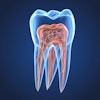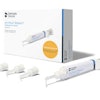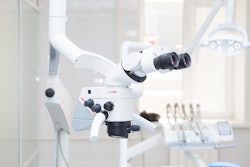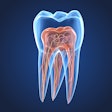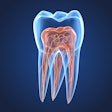Women receiving root canal treatment may experience increased dental anxiety during certain phases of their menstrual cycle, likely linked to lower estrogen levels, according to a study recently published in Scientific Reports.
By considering menstrual cycle phases, clinicians can better anticipate anxiety and provide more personalized care that may improve treatment outcomes, the authors wrote.
“Our findings indicate that women are especially vulnerable to heightened dental anxiety during both the menstrual and secretory phases of their cycle,” wrote the authors, led by Merve Çoban Öksüzer of Pamukkale University in Denizli, Turkey (Sci Rep, October 10, 2025, Vol. 15:1, 35442).
Dental anxiety is common among patients and often leads to delayed or avoided treatment. Research suggests that women cope with stress better during the proliferative phase, when estrogen levels rise, but experience more stress during the secretory phase, when estrogen drops. This study aimed to examine how the menstrual, proliferative, and secretory phases possibly affect dental anxiety in women before root canal treatment.
The analytical cross-sectional study included 259 participants ages 18 to 50, of whom 191 were women requiring root canal treatment. Female participants were categorized into menstrual (Days 1 to 4), proliferative (Days 5 through 14), and secretory (Days 15 to 28) phases based on self-reported cycle data, they wrote.
Men were included as a comparison group to evaluate gender differences. Anxiety levels were measured using the Modified Dental Anxiety Scale (MDAS), the State-Trait Anxiety Inventory (STAI), and physiological indicators such as blood pressure and oxygen saturation. Data was collected from September 2023 to October 2024.
Women in the menstrual and secretory phases showed significantly higher MDAS and STAI-trait (T) scores than men (p < 0.001). Additionally, STAI-state (S) scores were higher in all three menstrual phases compared to men (p = 0.001). Regression analysis confirmed these associations remained significant after adjusting for confounders, while age, education, preoperative pain, and physiological measures had no significant effect, they wrote.
The menstrual phase was linked to an average 3.5-point increase in MDAS scores (p < 0.001), and both menstrual and secretory phases elevated anxiety across all models. Overall, hormonal cycle phases explained about 4% to 6% of anxiety score variance, and a strong positive correlation was found between MDAS and both STAI-S and STAI-T scores.
However, the study had limitations. Uncontrolled factors like past dental experiences, sleep quality, and lifestyle habits may have influenced the link between menstrual cycle phases and anxiety levels, the authors added.
“By taking menstrual cycle phase into account when planning and delivering dental care, practitioners can develop more individualized approaches that improve patient comfort, satisfaction, and overall treatment outcomes,” they concluded.

